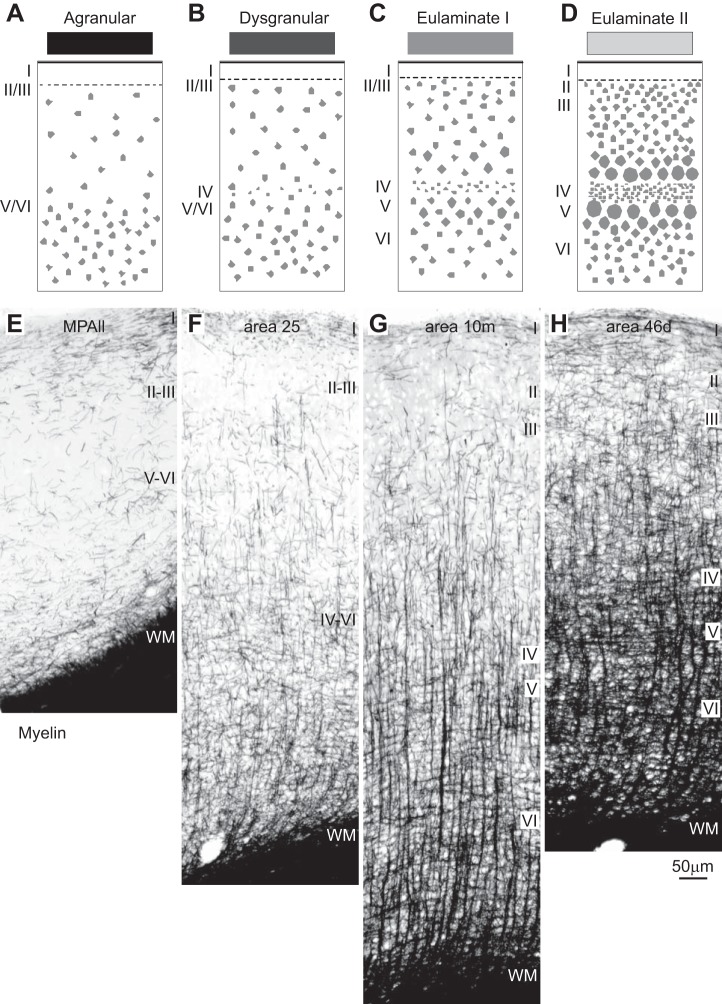Fig. 2.
Systematic variation in the laminar structure of the cortex is accompanied by other features. A–D: cartoons show systematic changes in laminar structure that can be used to group areas into types of cortex. Shades of gray (top) show types of cortices from the least (black) to the greatest (lightest gray) elaboration of laminar structure. E–H: coronal sections through the types of prefrontal areas depicted in A–D show that agranular areas have the lowest (left), and the best-delineated eulaminate areas have the highest (right), density of myelinated fibers. Myelin changes often accompany changes in laminar structure, but not always, and thus are a correlate but not a substitute for laminar structure. E: agranular medial prefrontal area MPAll (medial periallocortex). F: the dysgranular part of area 25. G: eulaminate I area 10m. H: eulaminate II area 46d. WM, white matter. Roman numerals indicate cortical layers. Calibration bar in H applies to E–H.

